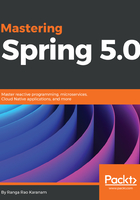
上QQ阅读APP看书,第一时间看更新
Problems with EJB
Spring Framework was released in March 2004. When the first version of Spring Framework was released, the popular way of developing an enterprise application was using Enterprise Java Beans (EJB) 2.1.
Developing and deploying EJBs was a cumbersome process. While EJBs made the distribution of components easier, developing, unit testing, and deploying them was not easy. The initial versions of EJBs (1.0, 2.0, 2.1) had a complex Application Programmer Interface (API), leading to a perception (and truth in most applications) that the complexity introduced far outweighed the benefits:
- Difficult to unit test. Actually, difficult to test outside the EJB Container.
- Multiple interfaces need to be implemented with a number of unnecessary methods.
- Cumbersome and tedious exception handling.
- Inconvenient deployment descriptors.
Spring Framework was introduced as a lightweight framework aimed at making developing Java EE applications simpler.